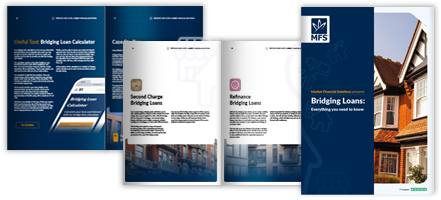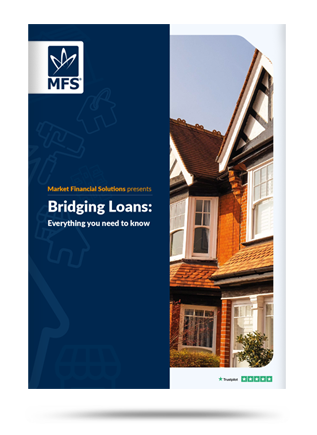Disclaimer
Market Financial Solutions are a bridging loan and buy-to-let mortgage provider, not financial advisors. Therefore, Investors are encouraged to seek professional advice. The information in this content is correct at time of writing.

Technically, yes. Bridging loans are primarily used to “bridge the gap” between property investment transactions. Often, this involves securing a property in the short-term, while long-term solutions are found. But, a bridging loan for stamp duty bills is a possibility.
Specialist finance can be used to clear existing finance, fund a business venture, or bridge a funding gap. When assessing a claim, we focus on understanding the security asset’s value, and the investor’s exit strategy.
If a borrower plans to use a bridging loan for stamp duty costs, they’ll likely be making a substantial investment. Our funding starts from £100,000. Comparatively, stamp duty bills tend to only cost a few thousand pounds.
A Stamp Duty Bridging Loan – Why Would There Be a Need For One?
If investors are thinking about a bridging loan for stamp duty costs, they’re probably not the only one. The property market has been swayed by several stamp duty changes in recent years. While individual stamp duty bills may be relatively low, we’re collectively paying billions to cover the levy.
It’s no wonder the government targeted the tax for reform. In July 2020, at the height of the pandemic, then Chancellor Rishi Sunak introduced a stamp duty holiday to boost the UK property market. Eventually, the scheme was extended into 2021.
Buyers completing on a property for less than £500,000, before July 2021, didn’t have to pay stamp duty at all. Reduced rates were also available. Additionally, thresholds were raised, with the latest update occurring in September 2022.
In Rachel Reeve’s 2024 budget, it was revealed that people buying an additional property would be subject to a higher stamp duty tax from October 31, rising from an extra 3% to 5%.
What Impact Did the Stamp Duty Holiday Have on the Market?
The stamp duty holiday encouraged buyers to act. After the initial introduction, 1.3 million buyers in England paid no stamp duty on the first £500,000 of their purchases. Meanwhile, estate agents reported a boom in enquiries.
House prices rose at the fastest rate seen since 2004. Between July 2020 and December 2021, the average price across all property types in England rose from £253,226 to £285,784, according to land registry data.
But while the stamp duty holiday had a positive impact on prices, the market somewhat went into reverse when the taps were turned off. Average house prices fell by £6,000 between September and October 2021, following the end of the holiday.
Also, demand for property dropped in the immediate aftermath. UK house sales fell 52% in the month after the deadline. While the impact of the holiday has diminished, stamp duty rules may come to the forefront once more over the coming years. A fresh deadline is on the horizon. Many could soon be looking into bridging loans for stamp duty obligations once again.

Get Ready For a New Deadline, and Ramped Up Demand
More stamp duty cuts were announced in Liz Truss’ “mini Budget”. They were intended to be permanent. But, following a disastrous reception, the government was forced to U-turn on many of its new promises.
Following the mini Budget, then Chancellor Jeremy Hunt delivered an Autumn statement which aimed to amend a lot of the damage. He confirmed the stamp duty cuts would remain in place, but only until March 31, 2025.
We’ve seen how property investors and homeowners were keen to take advantage of generous tax perks in recent years. We may see another stamp duty rush emerge as this new deadline draws near.
But, where demand rises, property investors could struggle to get ahead. Mainstream lenders and high street banks tightened their criteria following the mini Budget, while UK mortgage approvals fell to the lowest level seen since mid-2020 in late 2022. Should the economy face any other nasty shocks in the future, it’s unclear if the high street players will have an appetite to lend.
How Specialist Lenders Step In With a Stamp Duty Bridging Loan
Fortunately, the specialist lending industry will be there to support property investors in need. As last-minute buyers sought to take advantage of the stamp duty holiday, we were able to keep up with the intensity of the market.
Specialist lenders are primed to adapt to these kinds of unique, somewhat unexpected market movements. We can issue bridging loans in as little as 3 days. Leaving investors with time to spare for hitting any looming deadline.
Our flexibility also allows us to not only adapt to their circumstances, but also keep up with changing legislation. We take the macro-economic environment into account when assessing a borrower’s plans. We understand how new tax rules, shifting demand, and political instability could impact an investment. Headaches about a bridging loan for stamp duty could be eased with our specialist lending products.
If investors want to get ahead of another last-minute sprint, we may be able to get their property investment plans to the finish line before others have even started the race.
The Complete Guide to
Bridging Loans
Everything you need to know
- Different bridging types
- Useful tools
- Apply them in real life
- Market insights & more





